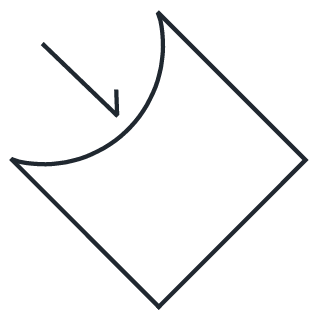Etex
Etex is a Belgian family-owned business specialised in building materials. Over the years its factory grounds in the town of Kapelle-op-den-Bos have organically grown according to changing production methods and market demands.
The Etex campus now takes up a rather large proportion of the territory of the village. Nonetheless its spatial impact and presence within the (sub)urban fabric remains negligible. Its location right in the centre of town is motivated by logistic reasons, namely the proximity to canal and railway. While the scale of its industrial activity is commensurate with those transport links, it stands in jarring contrast to the fine-grained texture of the town and the suburban villas around. The plant remains a kind of black hole at the heart of village life, not corresponding to the overall significance of the company to the community.
The production halls are mostly hidden behind tall fences. Recently an international headquarters building designed by a renowned architect was added across the road from the main production site. As a free-standing glass monolith in the midst of a barren expanse of surface car parking it is a stylish but rather generic representation of this dynamic and forward-thinking business. Its construction has done little to create closer connections between the company and its surroundings.
From hard edge to sequenced approach
Etex launched a competition inviting proposals for a masterplan of the industrial site in its entirety as well as for more detailed design scenarios for the development of the northern part of the site. For POLO this became an opportunity to rethink a campus that hitherto had proliferated in a rather haphazard way; to remediate some of the ills from the past but also to prepare for the future.
For the detailed proposal Etex sought designs for a new Social Building and an Innovation and Training centre which were to be located adjacent to the railway and across the road from the new headquarters. Three different options were sought, varying from a low-impact scenario with limited budget through to a maximal version at a higher cost.
For all three options POLO proposed to draw back the fence away from the site boundary, giving back a portion of the terrain to public space. This should soften up the site’s edges with accessible greenery and present a friendlier face to the public realm. Since the road here is one of the main access points to the town and is flanked by Etex properties on both sides, we have the opportunity to create a generous “green gate” for the village — a gift from the company to the community that has been such a generous host over the years.
A common thread in our three proposals is the introduction of a new slab block which demarcates the area in a “front of house” and “back of house” section. The former zone hosts the leisure and representative functions such as entrance, social building and showroom. This is where the company meets the world outside. The slab itself functions as a kind of interface, primarily housing the innovation centre: here is where experimentation takes place, new products are developed and tested for marketability and material properties. Behind this building, shielded from the outside world, lies the secured private realm of manufacturing.
Beyond industrial functionalism: architecture as place-making
The new slab block could function as a symbolic gate building to the industrial grounds beyond. A sculptural concrete frame on ground floor allows for large spans and creates a distinctive identity for the building in contrast to the functionalist production buildings.
Another recurring element in both our minimal (or “Light”) and maximal (or “High) scenarios is the cylindrical extrusion of the Social building. While situated in different locations, it integrates a similar layout in both options. Its striking form also represents a departure from the straightforward orthogonality of the industrial facilities. As such it does not just incorporate the canteen and changing rooms for employees but also functions as an eye-catching entrance building to the site. This is a welcome departure from the current confusing public face of the company, with the unwelcoming security turnstiles as the unceremonious entrance to the site. In a further move to be the representative face of the company, the building features a horizontal louvre system fashioned out of Etex building materials.
As the different scenarios represent different levels of investment, they also represent a different number of buildings: 4, 3 and 2 buildings for the light, medium and high scenarios respectively. This corresponds with more old buildings being retained in the cheaper scenario, while a bigger investment allows for concentration of more functions within the slab building. The latter would also be a more space-saving option, leaving room on the site for future development.
We believe our proposal would help forge a new forward-looking identity for Etex, leaving its checkered history behind and embedding its operations more closely within the local community.







